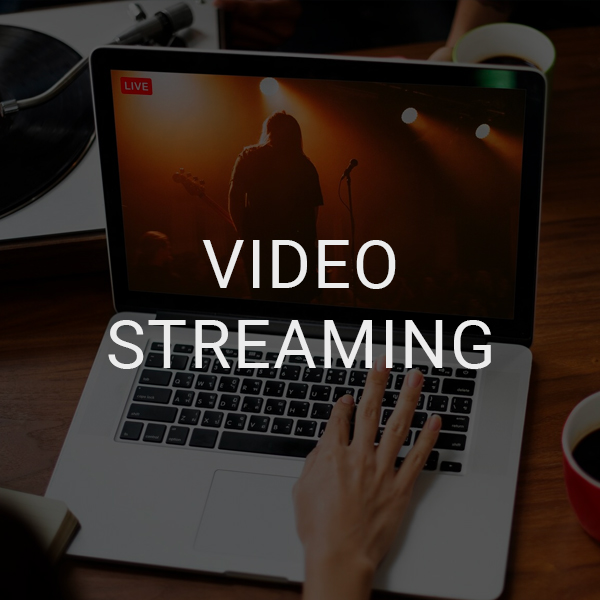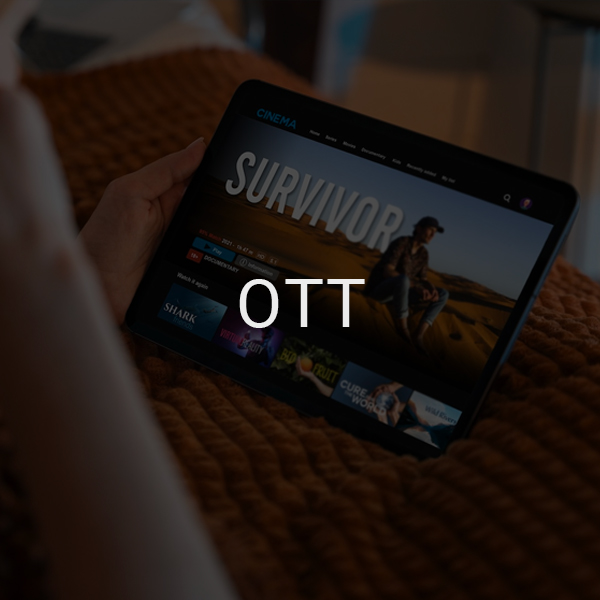OTT(Over-The-Top) helps content creators bring their content to viewers via the Internet through a safe and fast delivery network.

The acronym OTT stands for Over-the-Top. This convenient little term explains the new delivery method of film and TV content over the internet whenever we want, across many different devices, without the need for traditional broadcast, cable or satellite pay-TV providers. In simple terms, OTT streaming means paying an internet provider for internet access to watch Netflix, without paying for cable TV.
It’s important that OTT streaming not be confused with video streaming – because they are 2 different levels of content and experience.

Is when content is simply streamed across an array of devices like smart TV’s, mobile devices, computers, and OTT devices as well. YouTube is the most popular platform for video streaming.

OTT is a direct-to-consumer video content platform where premium content and a superior experience are available for customers to stream on-demand, like Netflix, Disney+, Hulu, and so on. No matter the provider, OTT content can also be streamed on the vast array of today’s devices.
There are many functional and performance requirements for which EQOTT is ready for:
OTT platforms can be an excellent business model to reach audience. OTT has been proven to drive real-world results for businesses, and they can do the same for your business. Here are some benefits that OTT services can yield for your business:
Having your own OTT business means that you can have your dedicated channel to provide content and engage with your audience directly. You have full control over the brand and the style, you can manage your content and make it address the right audience. Unlike Youtube, you can finally deliver ad-free content. If you have a direct sponsorship, it’s also your call to decide how you want to communicate with your audience.
Video is delivered through an open network in an OTT platform without investing in carriage negotiations and infrastructure investment. Also, it requires only a compatible device to connect to the internet to work. Because of that, OTT services are pretty easy to deploy, maintain, manage, and update than other media services such as cable.
According to a research report by Roku projects, by the year 2025, approximately 60 million American households will use OTT services. Only time will tell, but if the prediction is accurate, OTT service providers will have an increasing number of consumers who have switched from traditional TV.
OTT service providers usually have complete ownership to use any video monetization model of their choice for their content. OTT services work on three different types of models:
whether it is transaction-based (TVOD), ad-based (AVOD), or subscription-based (SVOD) model. As a provider, you’re free to use the best-suited model for your content to maximize uptake.
If you’re still wondering if your direct-to-consumer service is worth it in the current age compared to distributing content online, the truth is both can be a great combination if you’re looking to reach out to a massive audience. However, don’t forget about the difficulty of managing a distributor-consumer service: what control do you have over your brand, content, audience data, or user experience? Truthfully, none.
OTT services are not just about personalized content accessible at any time; it is also about the experience delivered to the consumer based on their consumption data and viewing habits. In fact, according to a survey, about 86% of online video consumers are willing to pay more for an excellent customer experience. The more control you have over customer experience; the more content you can keep providing your audience.
In most cases, consumers of traditional pay-tv, like satellite, cable, and IPTV, usually lack a variety of content due to limited catalogs. However, OTT services provide a wide range of original and licensed videos, including linear TV channels, VOD titles, and live streams to choose from. Therefore, consumers can access the contents of their choice and preference.
One thing about video consumers is that they love to choose their media consumption. With OTT services, they can watch the contents they like at whatever time and on any device of their choice. Because of its wider consumer choice, it leads to a broader user gain and content engagement: your consumers are more likely to stick to your service when they can access video contents they like.
Same as the advertisement. Most OTT service providers offer customization options for advertisers and consumers to promote a highly customized ad-viewing experience that keeps users engaged while maintaining a market opportunity for outside companies. OTT media services are generally viewed as less disruptive and more personalized than other media forms. In that case, OTT service providers can benefit from the high levels of customer satisfaction.
Because OTT services require only a device to connect to the internet, the cost of deploying the service is reduced. Plus, with OTT streaming, the same video content can be consumed across different devices such as desktop, mobile app, and tablet. Therefore, the prices for these services tend to be more affordable and attractive for the users, which expedites the growth of the paid users.
Because OTT users can view content on their terms, OTT media allows business owners to interact with consumers across a broad spectrum of places and times.
The accessibility of OTT content is one of the many reasons it’s so popular. To stream OTT, customers only need a high-speed internet connection and a connected device that supports apps or browsers.
Smartphones and tablets are able to download OTT apps to stream on-the go.
Consumers can access OTT content from desktop-based apps or web browsers.
The most common examples include Roku, Apple TV, Fire TV, and more. Game consoles, like PlayStation, also often support OTT apps.
While there are too many things from an architecture perspective that go into the building of a streaming app, we will try to cover a few foundation elements.
EQOTT offer many advantages in this aspect like:
Content is delivered to devices through CDNs, which act as the cache for the content. Edge computing uses the power of the cloud and takes computing power close to the end device. This is the first layer of logic that interacts with devices, and it links the request to the appropriate API within the services architecture. It also provides the abstraction layer to the mid-tier services.
This helps the streaming service manage peaks in the load by implementing throttling mechanisms that reject the extra incoming requests and diverting them to other servers when the traffic crosses a threshold.
The entire backend application is split into hundreds of independent services. These services implement specific business logic, hence encapsulating one service from another. This enables the entire service to function without the risk of one flaw bringing the whole application down to its knees. These services provide functions such as authentication, licensing, playback, artwork, etc.
Every media file is broken into chunks and transcoded into different bit rates. This is done to provide the best possible quality to different devices at varying bandwidths. Every media content demands its quality standards. A fast-moving video will require transcoding at a higher quality than a video, which is relatively slow-moving. Adaptive streaming is used to push the most appropriate bit rate segment of the video. Local caching is used to serve subscribers. Push fill methodology is used to load the content in a regional CDN based on the popularity of the content in that region.
Data is created at an enormous scale since billions of events take place in a day and millions in a second. A data pipeline must be designed to enable the cloud storage of the video viewings and UI activities. This data is used for big data analytics. This, along with device error logs and diagnostic events, is also used for monitoring and debugging operations.